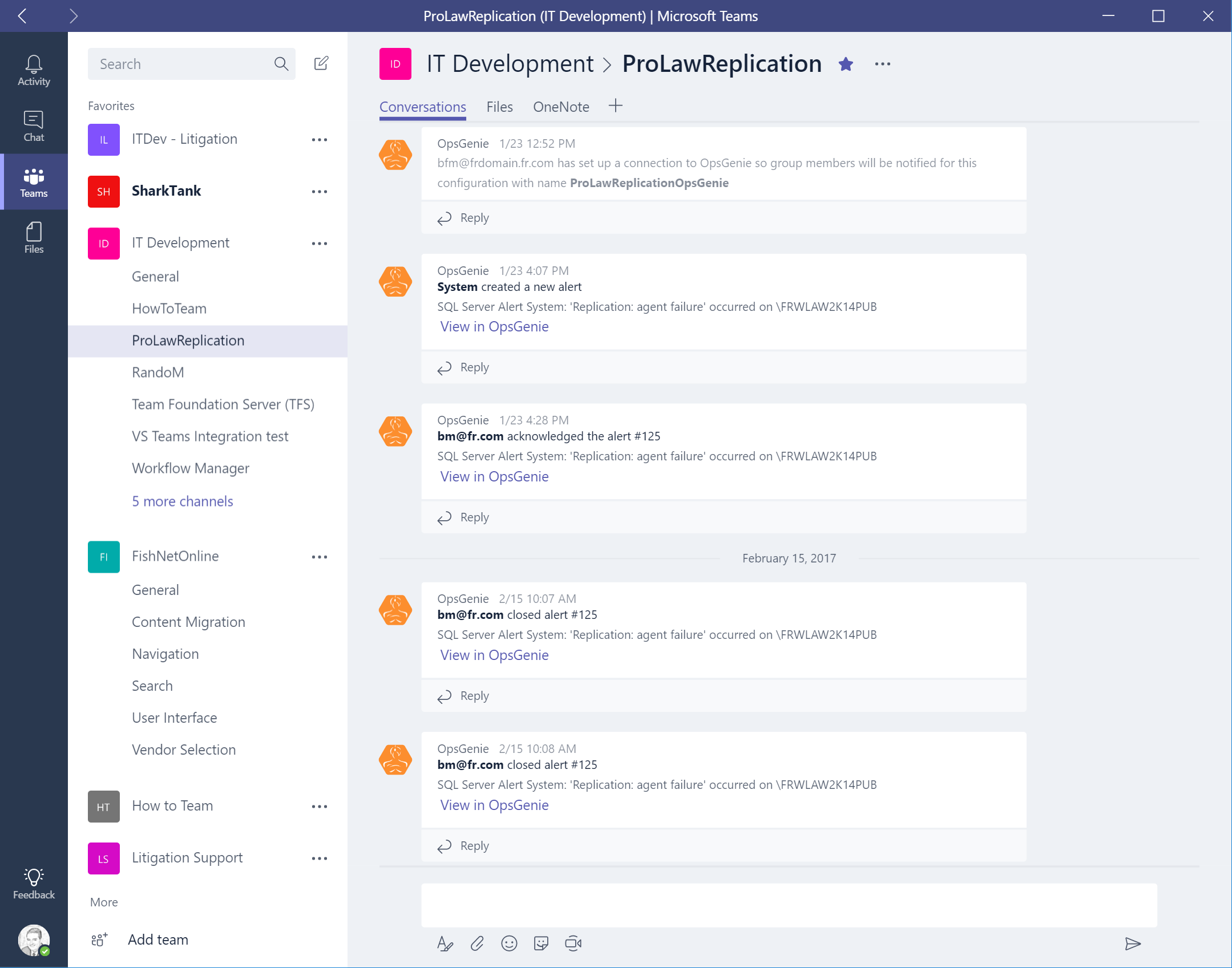What are Teams?
Microsoft recently released a new chat-based tool that is similar in concept to Slack or Hipchat. Chat-based tools are useful for teams on the go who need a central repository for all conversations. Historically in law firms, this repository has been e-mail. E-mail used to be awesome; now it is a painful wasteland of junk e-mail, malware attack vectors, and information overload. Slack is one of the most popular chat-based systems available and is the chat-based tool that my teams use at Fish.

We use Slack to discuss projects, issues, deployments, and random topics. Slack allows us to focus on a subject at hand via a channel and have the history of that issue preserved for searching in the future. Chat-based systems let dispersed teams obtain the benefits of the open-plan office while on the road. We can move a chat to Skype for Business video with the click of a button. Teams do not get rid of e-mail, they augment it with focus and precision into channels.
When Microsoft announced the beta availability of Teams last year, we started testing it because we had just signed an Office 365 agreement with Microsoft. Like Slack, Teams also incorporate the idea of channels. Unlike Slack, we can open up Teams, Planner, and other Office 365 tools to everyone in our firm with our Office 365 subscription.
In fact, we have brought our first non-IT team online in Teams and Planner with our Lit Support team. Microsoft Planner is a new task management system that Microsoft is rapidly evolving. We are using it for To-Do tasks that teams need to keep track of in the course of a day.

We have integrated MSFT Teams and OpsGenie for alerts on ProLaw replication issues. We are building this automation as part of our DevOps automation.

How Legal teams can use Microsoft Teams
Eventually, we plan to open up Teams to everyone in our firm. I think our attorneys are going to embrace Teams. Our first foray will be with our QOTD (Question of the Day) distribution lists. Teams have the ability to accept submissions via email. The first QOTD DL that I am going to attempt to move is our Federal Circuit Summaries. I think having threaded discussions centered on specific topics is going to be very popular for our attorneys. We are always trying to eliminate our dependency on e-mail. I believe Teams will allow us to do this.
Long term, I think we can migrate Legal teams off e-mail and into Teams. We will take our time, pilot these projects with small teams, and then let our attorneys champion the solution with other teams. Out Litigation teams have fully embraced co-authoring with Word and SharePoint. I expect they will adopt Teams. Eventually, we will incorporate Teams and Planner into our award-winning case management system built on top of SharePoint.
Problems with Teams
I polled our Slack users, and these are the issues they see with Teams:
- Channels are hidden
- Code snippets are missing
- Notifications aren’t customizable
- UI could be streamlined
- No ability to highlight key words
- No ability to reference a channel in email or another channel with a URL
How to implement Teams
We plan to adopt Teams and Planner rapidly across the firm. To deploy quickly, we had to address several concerns. These issues include:
Culture – chat tools are inherently informal and fast. Emoticons and gifs are available. We had to set an appropriate culture in our channels. We created a channel called RandoM for our teams to discuss the random day-to-day funny stuff that seems to creep into chats. We have not experienced any inappropriate behavior in our Slack channels, and we do not expect any in Teams. Our names are tied to our comments.
Governance – Teams are built on top of Groups, SharePoint Online, Skype for Business, Azure AD, and Exchange. When you create a team, a Microsoft Group is also created which can be thought of as a distribution list. You do not necessarily want anyone to be able to create a distribution list, so you need to control group creation. This Microsoft page explains how to limit group creation with an AD security group. When you upload a file to a Microsoft Team, it is uploaded to a SharePoint document library for that group. With General Availability Microsoft has support for Archiving, eDiscovery, and legal hold scenarios. Data is encrypted at rest and in transit. Source
We have set up our Microsoft tenancy to not allow sharing of content with people outside of our firm.
#Microsoft